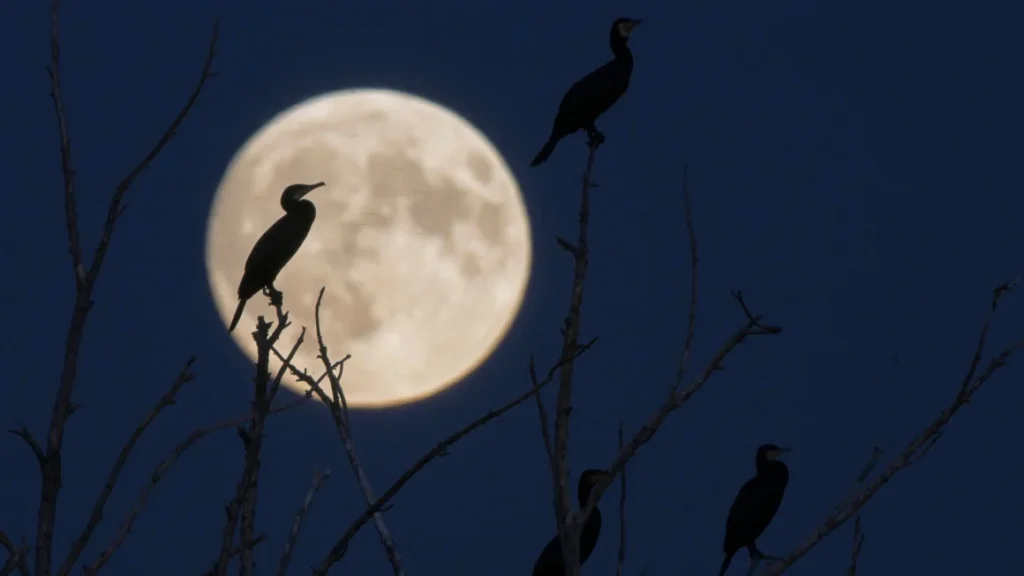The harvest supermoon also causes a partial lunar eclipse.

- A partial lunar eclipse was visible to skywatchers all over the world on Tuesday night, while September’s full harvest moon shone brightly.
- According to NASA, the moon reached its full phase at 10:35 p.m. ET Tuesday and will remain full until Thursday morning.
- If you looked at the moon on Tuesday evening, it seemed like it had been bitten for approximately an hour due to a partial lunar eclipse. A partial lunar eclipse happens when the Earth passes between the sun and the full moon without precisely aligning. The celestial event was visible over Europe, much of Asia, Africa, North America, and South America.
- The moon reached Earth’s entire shadow at 10:13 p.m. ET and emerged at 11:16 p.m. ET. NASA predicted that the eclipse’s peak will occur at 10:44 p.m. ET.
- According to NASA, during a total lunar eclipse, Earth’s shadow can cause the moon’s surface to turn a dramatic red color, resulting in a blood moon.

- “The eclipse (Tuesday) will not be a total lunar eclipse, so the moon will not appear red; instead, a portion of the moon will darken,” explained Noah Petro, NASA project scientist for both the Lunar Reconnaissance Orbiter and Artemis III.
- “If you didn’t know it was happening or looked at the moon, you might not notice. However, a close observer may detect that the ‘top right’ corner of the moon is darker than the rest of the moon,” he explained via email. “This is the section that is entirely in (Earth’s) shadow, yet only a small piece of the moon will be in darkness. But if it’s clear, I advise people to go outside and gaze at the moon; it’s always worth it!” September is full
- According to NASA, the moon is the second of four consecutive supermoons that are scheduled in 2024. The definition of a supermoon varies, but it often refers to a full moon that is closer to Earth than usual, making it appear larger and brighter in the night sky.
- According to some scientists, the phenomena occurs when the moon is within 90% of its perigee, or closest approach to Earth in orbit. While the usual distance between Earth and the moon is 238,900 miles (384,472 kilometers), NASA predicted that the September full moon would be only 222,637 miles (358,300 kilometers) away. And keep an eye out for Saturn, which will appear as a brilliant dot around the full moon.
Naming the Moon :
- The name harvest moon refers to the fact that the event comes at the beginning of fall, or the autumnal equinox, which falls on September 22.
- Many people identify the harvest moon with being orange when it rises, however this could be stated for any full moon. According to EarthSky, the tint is caused by the thicker atmosphere toward the horizon.
- According to The Old Farmer’s Almanac, this is the time of year when many summer-planted crops peak in the Northern Hemisphere, and the brilliant moon used to aid farmers work late into the evening to harvest their bounty before the first frost.

- Other names for September’s full moon used by various indigenous groups include the “moon of full harvest” from the Hopi, the “corn maker moon” from the Abenaki, the “moon of the brown leaves” from the Lakota, and the “autumn moon” from the Passamaquoddy tribe.
- According to NASA, European moon names honor the fall harvest, including the “fruit moon,” which refers to the fruits that ripen as summer closes, and the “barley moon,” which marks when the crop is taken from the fields.
- Other harvest-celebrating customs around this time include the Korean Chuseok festival and the Chinese Mooncake Festival, both of which honor family and ancestors.



